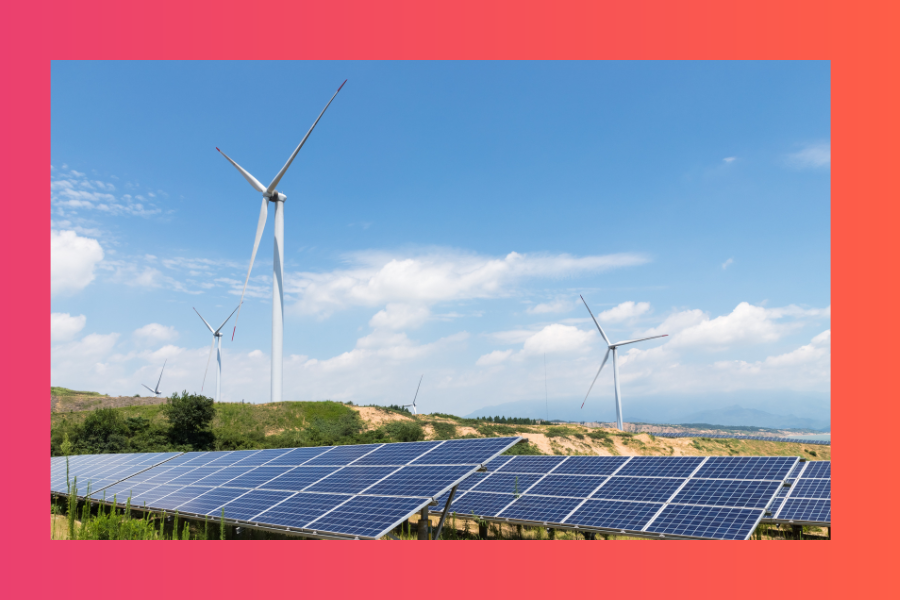Comparing Australia and the U.S.A. in Going Green
Australia and the United States of America (U.S.) share a great deal in common, both in terms of a similar history, and future directions these two...
6 min read
![]() Solar Trust Centre Team
:
Jul 12, 2022 12:45:26 PM
Solar Trust Centre Team
:
Jul 12, 2022 12:45:26 PM

A comparison between Australia and the United Kingdom when it comes to solar power may appear an unusual endeavour at first glance. After all, while Australia is renowned for being a ‘sunburnt country’, the UK by contrast is commonly regarded by its residents and those abroad for having a cooler climate, with rain and overcast skies a consistent feature across many months of the calendar, throughout many areas of the four countries (England, Scotland, Wales, and Northern Ireland) which combine to form the UK. But even though the climates of Australia and the UK are very different overall, there is also a great deal of common ground when it comes to the quest to grow solar power specifically, and renewable energy generally. So let’s now kick off the first in a series of comparison pieces on green action across the globe, by comparing Australia and the UK.
There are now over 3 million rooftop solar installations in place across Australia. This follows multiple years of recording-breaking growth. This is a remarkable story, especially given the disruption caused by the pandemic. What’s more, Australia is firmly placed among world-leading nations in terms of per capita solar capacity - indeed it’s often cited as the world leader by this metric - with strong growth expected to continue in the future. As of the end of 2021, it’s held that small-scale solar accounted for 17GW of national capacity.
Furthermore, as of February 2022, data indicates Australia’s large-scale solar capacity was up to 5.8GW. All told - while different entities can use different measurements (and accordingly this can result in slightly different overall estimates) - it’s now understood that as of mid-year 2022 Australia has over 25GW of solar capacity in total, and - in a nation of 25 million people - this accordingly accounts for around 1kW of solar per person. Just remarkable.
The UK is certainly no slouch when it comes to its own renewable energy achievements. It’s held it added 730MW of solar generation capacity in 2021 alone, with 369MW of that originating from rooftop solar. In turn, that the UK commenced 2022 with 14.6GW of solar capacity in total. Even though - as distinct from Australia - solar may not seem like a ‘natural’ fit for the UK, given many areas across it will commonly be regarded as having more cloud and rain in comparison to the neighbouring France, Spain, and Portugal, in reality a number of local factors have been driving UK residents to take up renewable energy with extra zest.
Higher gas prices, Brexit, and the war in Ukraine - among other factors - have played a part in driving the growth of solar more rapidly than may have otherwise occurred. Additionally, the aspiration of many households across the UK to make their own unique contribution to going green - with the ever-growing awareness among the general public of climate change’s impact, and the need for strong action in response to it - is also a driving factor in the growth.
While solar is certainly important to the story of renewable energy growth in Australia and the UK, it’s of course not the only source of renewable energy. Wind power is a major factor within renewable energy in both locales.
According to the Clean Energy Council, within Australia wind power accounted for 35.86% of the electricity generation delivered by renewables to the energy mix (with renewables accounting for 32.5% of electricity generation in total within the whole energy mix). Accordingly, although collectively solar accounts for the biggest share of renewables in Australia - with small-scale solar generating 24.88%, and large-scale solar generating 12.29% respectively, accounting for 37.17% in total - the data affirms wind power certainly has a tremendous contribution to make to the Great Southern Land.
At present, around 40% of the UK’s electricity generation is met by renewables provided by Major Power Producers. Solar in the UK is ultimately smaller as a percentage of the energy mix than it is in Australia, but as of June 2021 it was held around 25% of the UK’s electricity generation during 2020 came from wind power. Accordingly, wind can indeed be regarded as a crucial component of the UK’s push to going green, just as solar is to Australia’s aspirations in this area.
More widely, there are of course other forms of energy that Australia and the UK share - both continue to utilise coal for the time being - and others they do not (Australia does not utilise nuclear power at present, whereas the UK does), and both also have a notable use of hydro power. Yet ultimately, it could be said that just as solar power is shaping up to be the centrepiece of Australia’s transition to 100% renewables, so too is wind presently serving as the key driver in the UK’s push to going green.
Although there is a shared history and ongoing sense of kinship between the UK and Australia, in 2022 the nations are fundamentally different from one another, and accordingly have been for many, many decades now. This point is important to note as many readers may initially think the UK and Australia would have very similar approaches to most matters, whereas in fact when it comes to climate change action a stark difference in recent times has been vivid. In this area, the UK political class has made some very commendable advances, and ones that Australia’s equivalent in Canberra should take heed of.
As distinct from Down Under where the so-called ‘climate wars’ have raged back and forth under different leaders since the election of the Rudd government in 2007, it can be said that the UK has gone down this road much more successfully, and with far fewer speed bumps. The Climate Change Act was passed in 2008 by the Blair Labour government, supported not only by government politicians, but also non-Labour ones. Then in 2019, a non-binding motion was passed in the House of Commons declaring an ‘environment and climate emergency’. Under the Conservative party which has been in power since 2010, the UK has pursued an aggressive push to go green, with plans in place to presently end the use of coal power to generate electricity by 2024, ban the sale of new cars powered only by petrol or diesel by 2030, reduce emissions by 78% based on 1990 levels by 2035, and the UK is aspiring to see 100% of its power provided by renewables, by the same year.
With the recent election of the Albanese government in May, the Labor Party has promised it will look to end Australia’s so-named climate wars in office. It is undoubted that Australia’s new government has a more ambitious plan for renewable energy and the reduction of emissions by 2030, than that of the former Coalition government led (variously) by Tony Abbott, Malcolm Turnbull, and Scott Morrison, while they were in office from 2013 to this year. At the same time, it’s also the case that many in Australia would wish to see the Albanese government pursue a more ambitious set of policies in these areas. In this regard, the UK has shown a commendable example of what can be done when bipartisan support, and - in particular - a readiness to engage in the development of responsible climate change action policies is on offer from conservative political parties. It’s clear that the great majority of Australians would now hope the Parliament can deliver in a similar fashion in the next few years, and in turn, would desire the Coalition to turn away from its woeful approach of the past decade in these matters, and to now support the quest to see more renewable and climate-friendly policies implemented.
Every country must travel its own unique path when it comes to building up its renewable energy capacity, and the same applies to taking strong action on climate change. In this vein, just as Australia and the UK are very different countries in terms of location, geography, and more, so too will their paths towards achieving 100% renewables and net zero emissions also differ. This said, there is also no doubting that both states have a great capacity to learn and draw inspiration from one another, and in this regard the longstanding ties of friendship between Australia and the United Kingdom certainly offers a solid foundation on which to do this in the renewables era.
That the sun-soaked Australia is a leading nation per capita in solar uptake is testament to the country’s capacity to leverage its natural advantages for the benefit of renewables growth. What’s more, alongside a new federal government that’s clearly more intent on pushing forward with renewables and climate change action, the nation also has the capacity under new leadership to more effectively engage with, and contribute to, smaller nations across the Pacific, many of whom are already very embattled by climate change challenges. In this regard, Canberra now has the ability to make a very positive and unique contribution not only to Australia’s quest to going green, but also that of the region.
Similarly, just as UK residents can be proud of their collective efforts in pursuing many green policies which indeed make the UK a leader in this area, London also retains a considerable degree of international influence, which means we can expect - particularly in association with the work the UK does alongside the European Union, the U.S. and Canada - that it’s contribution to helping foster positive change in nations well beyond its neighbourhood should indeed be very significant, in the years ahead.
Just as this brings us to the end of our first green action comparison piece here, for those keen to read more about renewables nearer to home, there’s many resources close at-hand. You can read here about how to find a quality solar installer, here about the relationship between renewables, climate change, and insurance, and here regarding what the road ahead looks like when combining solar power and the electric bike.

Australia and the United States of America (U.S.) share a great deal in common, both in terms of a similar history, and future directions these two...
.jpg)
Of all the countries in the world which Australia is comparable with, arguably Canada is the closest. Yes, New Zealand is the nearby neighbour and...
-2.jpg)
It’s widely known that Australia is land which has keenly embraced solar power. In fact, it’s been held that Australia has had the highest uptake of...